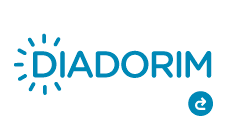MAGNITUDE DO CONHECIMENTO CIENTÍFICO PERTINENTE ÀS COLEÇÕES FÚNGICAS
Resumen
A importância das coleções fúngicas (CF) vão além da preservação, mas diz
respeito à necessidade de novas descobertas e contribuem para o desenvolvimento
científico e tecnológico. O conhecimento da existência das coleções, condiz com a
queda da quantidade das mesmas, visto que quanto menor o número de cientistas,
estudantes e instituições que conhecem a finalidade das CF, mais baixo ainda o
número de interesse do público condizente à aprimorar as CF. Entender desde o
significado da palavra até meios de armazenamento, é de extrema importância tanto
para a biodiversidade fúngica, auxiliando em diagnósticos, quanto para a
conservação de patrimônios locais. Necessidades básicas de preservação, como
financiamento e profissionais qualificados, podem ser adicionados como grande
peso para a queda do conhecimento das coleções. Em ambientes que as CF são
uma realidade, as normas e protocolos para armazenamento das mesmas, devem
ser seguidos minuciosamente, a fim de diminuir o risco de perda da coleção e
consequentemente auxiliar na propagação de conhecimento relacionados às CF.
Descargas
Citas
(USCCN): Enhancing microbial genomics research through living microbe culture
collections. Applied and Environmental Microbiology, v. 81, n. 17, p. 5671-5674,
2015.
BOUNDY‐MILLS, K; et al. Preserving US microbe collections sparks future
discoveries. Journal of applied microbiology, v. 129, n. 2, p. 162-174, 2020.
CASAREGOLA, Serge; et al. An information system for European culture collections:
the way forward. SpringerPlus, v. 5, p. 1-11, 2016.
FORTI, Tatiana; et al. Evaluation of a fungal collection as certified reference material
producer and as a biological resource center. Brazilian journal of microbiology, v.
47, n. 2, p. 403-409, 2016.
GADELHA, Paulo. The strategic role of Fiocruz in the context of Brazil’s National
Policy for Science, Technology, and Innovation in Health. Reports in Public Health.
v. 25, p 1436-1437, 2009.
GAUTAM, Ajay Kumar; et al. Current insight into traditional and modern methods in
fungal diversity estimates. Journal of Fungi, v. 8, n. 3, p. 226, 2022.
HAWKSWORTH, David L.; LÜCKING, Robert. Fungal diversity revisited: 2.2 to 3.8
million species. Microbiology spectrum, v. 5, n. 4, p. 10.1128/microbiolspec.
funk-0052-2016, 2017.
JANSSENS, Danielle; et al. The role of public biological resource centers in providing
a basic infrastructure for microbial research. Research in Microbiology, v.161, p
422-429, 2010.
JOSHI, Pranav RH; et al. Advancements in molecular design and bioprocessing of
recombinant adeno‐associated virus gene delivery vectors using the insect‐cell
baculovirus expression platform. Biotechnology Journal, v. 16, n. 4, p. 2000021,
2021.
LIMA, Mariana Rodrigues; et al. Could nanotechnology improve exercise
performance? Evidence from animal studies. Brazilian Journal of Medical and
Biological Research, v. 57, p. e13360, 2024.
61
LOFGREN, Lotus A.; STAJICH, Jason E. Fungal biodiversity and conservation
mycology in light of new technology, big data, and changing attitudes. Current
Biology, v. 31, n. 19, p. R1312-R1325, 2021.
MCCLUSKEY, Kevin; et al. The US culture collection network lays the foundation for
progress in preservation of valuable microbial resources. Phytopathology, v. 106, n.
6, p. 532-540, 2016.
MCCLUSKEY, Kevin; et al. The US Culture Collection Network responding to the
requirements of the Nagoya Protocol on access and benefit sharing. MBio, v. 8, n. 4,
p. 10.1128/mbio. 00982-17, 2017.
MCCLUSKEY, Kevin. A review of living collections with special emphasis on
sustainability and its impact on research across multiple disciplines. Biopreservation
and biobanking, v. 15, n. 1, p. 20-30, 2017.
MONEY, Nicholas P. Hyphal and mycelial consciousness: the concept of the fungal
mind. Fungal Biology, v. 125, n. 4, p. 257-259, 2021.
OVERMANN, Jörg. Significance and future role of microbial resource centers.
Systematic and applied microbiology, v. 38, n. 4, p. 258-265, 2015.
SETTE, Lara Durães; PAGNOCCA, Fernando Carlos; RODRIGUES, André.
Microbial culture collections as pillars for promoting fungal diversity, conservation and
exploitation. Fungal Genetics and Biology, v. 60, p. 2-8, 2013.
SMITH, David. Culture Collections. Advances in Applied Microbiology. v. 79, p.
73-118, 2012.
STROMBERG, Per M.; DEDEURWAERDERE, Tom; PASCUAL, Unai. The
heterogeneity of public ex situ collections of microorganisms: empirical evidence
about conservation practices, industry spillovers and public goods. Environmental
science & policy, v. 33, p. 19-27, 2013.
WU, Linhuan; et al. Global catalogue of microorganisms (gcm): a comprehensive
database and information retrieval, analysis, and visualization system for microbial
resources. BMC genomics, v. 14, p. 1-10, 2013.
DECLARAÇÃO DE ORIGINALIDADE E DIREITOS AUTORAIS
Declaro que o presente artigo é original, não tendo sido submetido à publicação em qualquer outro periódico nacional ou internacional, quer seja em parte ou em sua totalidade.
Os direitos autorais pertencem exclusivamente aos autores. Os direitos de licenciamento utilizados pelo periódico é a licença Creative Commons Attribution 4.0 (CC BY ): são permitidos o acompartilhamento (cópia e distribuição do material em qualqer meio ou formato) e adaptação (remix, transformação e criação de material a partir do conteúdo assim licenciado para quaisquer fins, inclusive comerciais.

Recomenda-se a leitura desse link para maiores informações sobre o tema: fornecimento de créditos e referências de forma correta, entre outros detalhes cruciais para uso adequado do material licenciado.
















